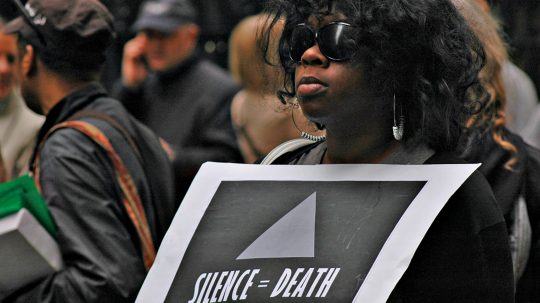In July 1995 there was a massacre. In the small mountain town of Srebrenica in Eastern Bosnia Serb forces killed more than 8,000 Muslim men in just a few days.
The atrocity prompted international action to stop the ongoing war – but genocide never happens overnight. In fact, the violence against the Bosnian Muslim community had been underway since the start of the war in 1992.
It was part of a strategic plan of the Bosnian Serb leadership, who were determined to create an ‘ethnically pure’ Greater Serbia. The final, shocking, culmination should not have come as any surprise. In order to prevent genocide, we need to protect rights for everyone, at all times.
Disquiet Running Back to the First World War
 Image Credit: Public Domain / Wikimedia
Image Credit: Public Domain / Wikimedia
Yugoslavia was created in 1918, at the end of the First World War, made up of what we now know as Croatia, Slovenia, Bosnia and Herzegovina, Serbia, Montenegro and Macedonia. There were also two autonomous regions in Serbia: Kosovo and Vojvodina.
During World War II, Croatia was essentially a Nazi puppet state, ruled by a fascist militia called the Ustaša. From 1941-1945 the Ustaša regime murdered hundreds of thousands of Serbs, Roma and Jews. Bosnian Muslims were members of both the Ustaša and the resistance, led by Marshal Tito.
Tito died in 1980. He had been the strongman holding the federation together. In the power vacuum left by his death, elites scrambled to seize control, falling back on nationalist tropes to bolster their positions and to distance themselves from the communist regime.
Bosnia and Herzegovina Before the Genocide
 Image Credit: Dennis Jarvis / Flickr
Image Credit: Dennis Jarvis / Flickr
Unlike the other republics in Yugoslavia, Bosnia was not dominated by a single ethnic group. In 1991, the population of Bosnia was 43.7 percent Muslim, 31.4 percent Serb and 17.3 percent Croat. Intermarriage between groups was common, and, especially in cities, people from different ethnic groups lived closely together.
In June 1991, Slovenia and Croatia had declared independence from the Federal Republic of Yugoslavia. This was both a reaction to increasingly aggressive Serb nationalism and a reflection of increasing nationalism in both Slovenia and Croatia since the mid-1980s. Bosnia and Herzegovina also declared independence in April 1992. The war in Bosnia (1992-1995) was part of the break up of Yugoslavia.
The Road to Genocide
 Image Credit: Tamas Varga / Flickr
Image Credit: Tamas Varga / Flickr
As early as the 1980s, the Serbian leadership led an increasingly aggressive propaganda campaign against Kosovar Albanians. It demonised them as an internal enemy, in pursuit of a so-called ‘Greater Serbia’. By 1991, Serbian propaganda also begun to demonise other groups.
In Bosnia, Bosnian Serbs were portrayed as victims, endangered by Bosnian Croats and Bosnian Muslims. Bosnian Muslims were portrayed as violent fundamentalists, and stories were spread of the extreme violence Bosnian Muslims were planning against Serbs.
In August 1991, a Serb paramilitary group took over a TV transmitter in Northern Bosnia. From this time onwards, Bosnian Serbs living in many of the Serbian majority parts of Bosnia no longer received TV or radio from Sarajevo. They were exclusively fed propaganda from Serbian media.
At the same time, Bosnian Muslims and Croats were discriminated against in the workplace and were removed from public office. In the army, for example, everyone had to swear an oath of allegiance to the Serbian nationalists. This also removed moderate Serbs, unless they swore allegiance too.
Bosnian Serbs established a parallel state within Bosnia and Herzegovina, with its own police force. The army and police targeted Bosnian Muslims in predominantly Serb areas, and set up checkpoints to harass and violate Bosnian Muslims.
Concentration Camps and Death
 The Omarska camp today. Image Credit: Lee Byrant / Flickr
The Omarska camp today. Image Credit: Lee Byrant / Flickr
From 1992 onwards, the Bosnian Serb leadership established concentration camps. Most of the prisoners were Bosnian Muslims. They were routinely tortured and raped, and many were killed. Outside the camps, Muslim Bosnians’ homes and villages were destroyed.
The massacre at Srebrenica, where 8,000 men were slaughtered, is the most infamous event of the genocide in Bosnia. But this was the culmination of years of mass killing and degrading treatment by Serbian forces of Bosnian Muslims.
By the end of the Bosnian War, more than 100,000 people had died, 20,000 were missing and there were 2 million refugees.
Bosnia and Herzegovina today
 Image Credit: Tamas Varga / Flickr
Image Credit: Tamas Varga / Flickr
Today, Bosnia, though at peace, remains divided along ethnic lines. Ethnic division was the basis for the Dayton Agreement that ended the war.
Roy Gutman, the journalist who exposed the genocide, said that “no one could have imagined … the atrocities against Muslims and Croat civilians for which the Serbs invented the euphemism ‘ethnic cleansing’.”
But though the descent into killing was rapid, it was the result of the chipping away of normality and safety, until a new normal was in place.
This piece is part of our #FightHateWithRights series and made possible by you through our crowd funder. The documentary, which will be launched on November 16, tells the story of three survivors of genocide.







